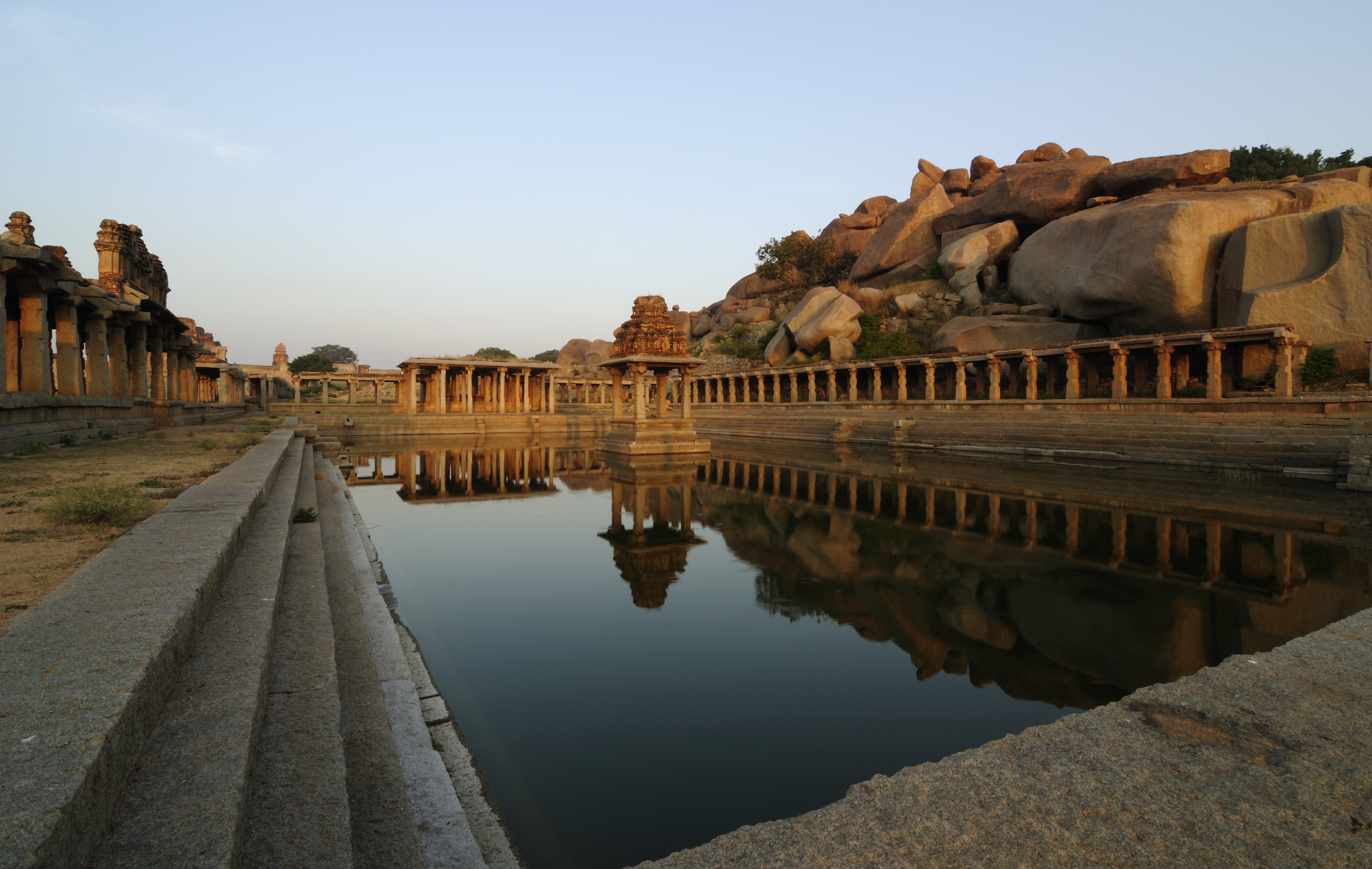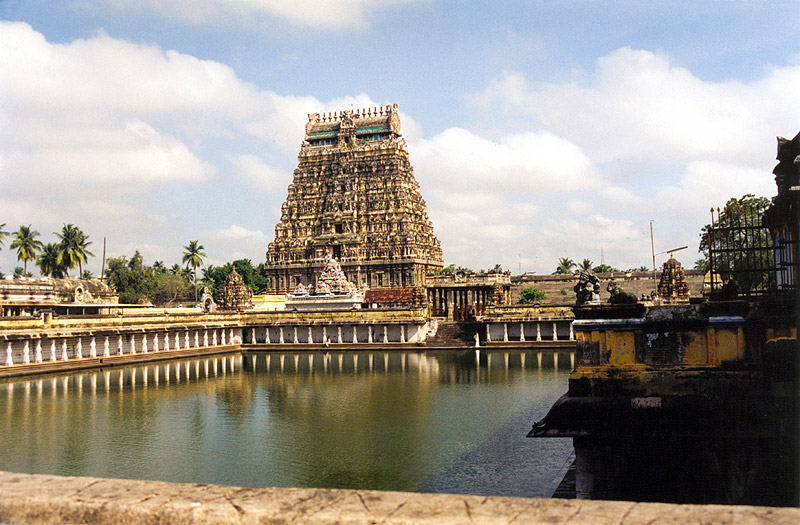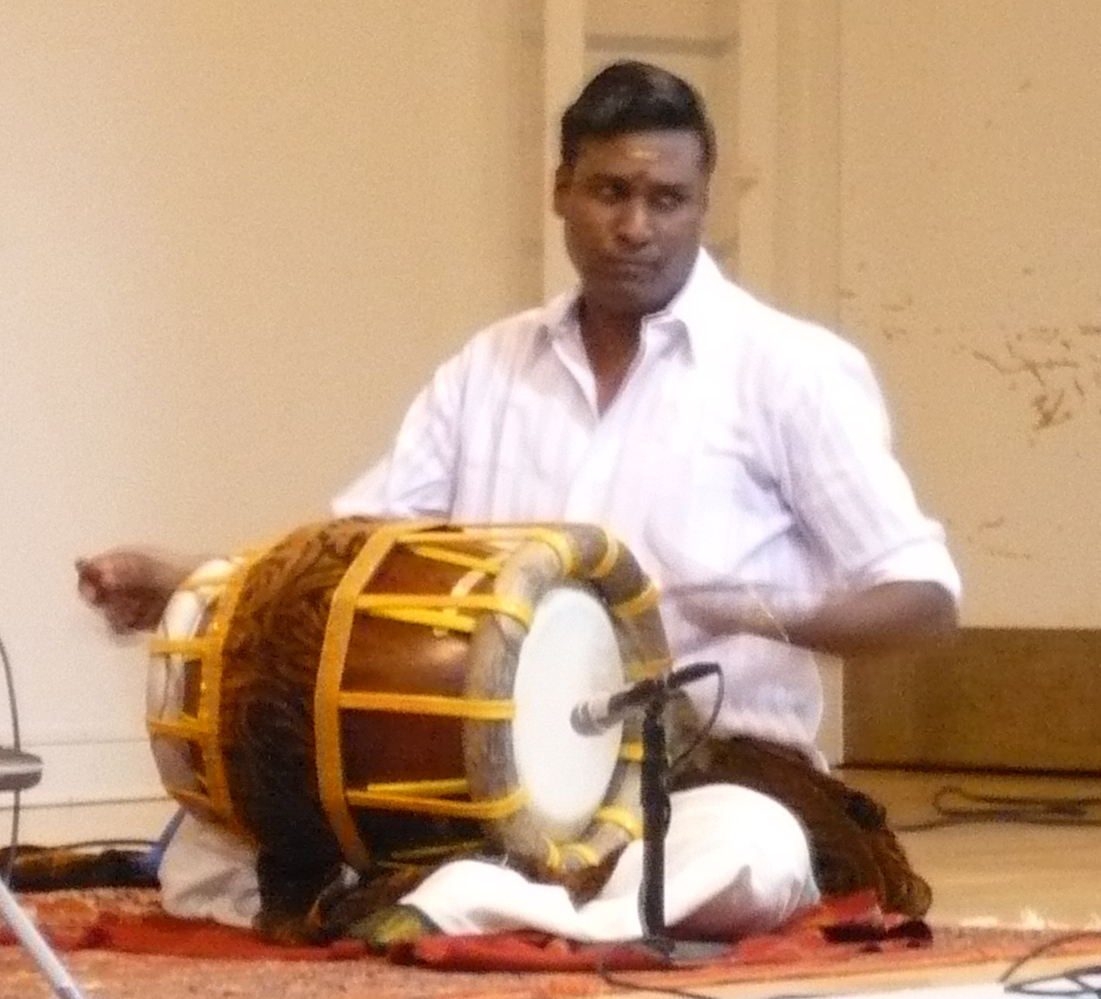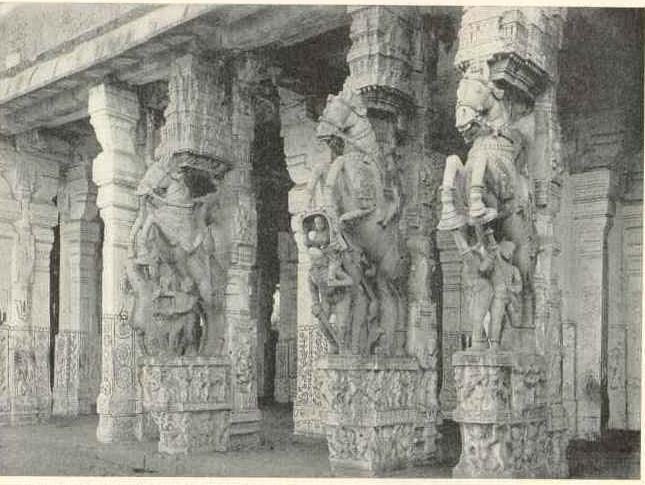|
Thirunandipura Vinnagaram
Nathan Kovil or Thiru Nandipura Vinnagaram Temple in Nathan Kovil, a village in the outskirts of Kumbakonam in the South Indian state of Tamil Nadu, is dedicated to the Hindu god Vishnu. Constructed in the Dravidian style of architecture, the temple is glorified in the ''Nalayira Divya Prabandham'', the early medieval Tamil canon of the Alvar saints from the 6th–9th centuries CE. It is one of the 108 ''Divya Desams'' dedicated to Vishnu, who is worshipped as Jagannathan and his consort Lakshmi as Shenbagavalli. Nandi, the sacred bull of Shiva, is believed to have got his curses relieved by worshipping Vishnu here and hence the place is called Nandipuram. All the shrines and water bodies associated with the temple are named after Nandi. Six rituals are performed everyday and two festivals are celebrated every year in the temple. The Fridays during the Tamil month of ''Aipasi'' are believed to be auspicious to worship Shenbagavalli. Legend As per Hindu legend, Nandi, the sacr ... [...More Info...] [...Related Items...] OR: [Wikipedia] [Google] [Baidu] |
India
India, officially the Republic of India (Hindi: ), is a country in South Asia. It is the seventh-largest country by area, the second-most populous country, and the most populous democracy in the world. Bounded by the Indian Ocean on the south, the Arabian Sea on the southwest, and the Bay of Bengal on the southeast, it shares land borders with Pakistan to the west; China, Nepal, and Bhutan to the north; and Bangladesh and Myanmar to the east. In the Indian Ocean, India is in the vicinity of Sri Lanka and the Maldives; its Andaman and Nicobar Islands share a maritime border with Thailand, Myanmar, and Indonesia. Modern humans arrived on the Indian subcontinent from Africa no later than 55,000 years ago., "Y-Chromosome and Mt-DNA data support the colonization of South Asia by modern humans originating in Africa. ... Coalescence dates for most non-European populations average to between 73–55 ka.", "Modern human beings—''Homo sapiens''—originated in Africa. Then, int ... [...More Info...] [...Related Items...] OR: [Wikipedia] [Google] [Baidu] |
Pushkarani
Temple tanks are wells or reservoirs built as part of the temple complex near Indian temples. They are called pushkarini, kalyani, kunda, sarovara, tirtha, talab, pukhuri, ambalakkuḷam, etc. in different languages and regions of India. Some tanks are said to cure various diseases and maladies when bathed in. It is possible that these are cultural remnants of structures such as the Great Bath of Mohenjo-daro or Dholavira, which was part of the Indus Valley civilization. Some are stepwells with many steps at the sides. Tank design Since ancient times, the design of water storage has been important in India's temple architecture, especially in western India where dry and monsoon seasons alternate. Temple tank design became an art form in itself. An example of the art of tank design is the large, geometrically spectacular Stepped Tank at the Royal Center at the ruins of Vijayanagara, the capital of the Vijayanagara Empire, surrounding the modern town of Hampi. It is lined with g ... [...More Info...] [...Related Items...] OR: [Wikipedia] [Google] [Baidu] |
Puja (Hinduism)
''Puja'' ( sa, पूजा, pūjā, translit-std=IAST) is a worship ritual performed by Hindus, Buddhists and Jains to offer devotional homage and prayer to one or more deities, to host and honor a guest, or to spiritually celebrate an event. It may honor or celebrate the presence of special guests, or their memories after they die. The word ''pūjā'' is Sanskrit, and means reverence, honor, homage, adoration, and worship.पूजा ''Sanskrit Dictionary'', Germany (2009) Puja, the loving offering of light, flowers, and water or food to the divine, is the essential ritual of Hinduism. For the worshipper, the divine is visible in the image, and the divinity sees the worshipper. The interaction between human and deity, between |
Iconography Of Shiva Temples In Tamil Nadu
Iconography of Shiva temples in Tamil Nadu is governed by the Shaiva Agamas (IAST:Āgama) that revere the ultimate reality as the Hindu deity, Shiva. Āgama (Sanskrit: आगम, Tamil:ஆகமம்) in the Hindu religious context means a traditional doctrine or system which commands faith. Temple worship according to Āgamic rules can be said to have started during the Pallava dynasty (551-901 A.D.) in South India, but they were fully under establishment during the Chola dynasty (848-1279 A.D.) The temples during the Chola period expanded to Sri Lanka and islands in South East Asia. The temple complex was expanding with niches for various deities on the stipulated sides of the sanctum. ''Lingam'' was universalised and ''prakarams'' (precincts) with subsequent deities came up. The temple ''parivara'' (deities related to primary deity) expanded considerably during the Chola period. The niches of following Āgamic rules for building Shiva temples in Tamil Nadu, a South India ... [...More Info...] [...Related Items...] OR: [Wikipedia] [Google] [Baidu] |
Vedas
upright=1.2, The Vedas are ancient Sanskrit texts of Hinduism. Above: A page from the '' Atharvaveda''. The Vedas (, , ) are a large body of religious texts originating in ancient India. Composed in Vedic Sanskrit, the texts constitute the oldest layer of Sanskrit literature and the oldest scriptures of Hinduism. There are four Vedas: the Rigveda, the Yajurveda, the Samaveda and the Atharvaveda. Each Veda has four subdivisions – the Samhitas (mantras and benedictions), the Aranyakas (text on rituals, ceremonies, sacrifices and symbolic-sacrifices), the Brahmanas (commentaries on rituals, ceremonies and sacrifices), and the Upanishads (texts discussing meditation, philosophy and spiritual knowledge).Gavin Flood (1996), ''An Introduction to Hinduism'', Cambridge University Press, , pp. 35–39A Bhattacharya (2006), ''Hindu Dharma: Introduction to Scriptures and Theology'', , pp. 8–14; George M. Williams (2003), Handbook of Hindu Mythology, Oxford University Press, , p ... [...More Info...] [...Related Items...] OR: [Wikipedia] [Google] [Baidu] |
Tavil
A ''thavil'' (Tamil language, Tamil:தவில்) or ''tavil'' is a barrel-shaped percussion instrument from Tamil Nadu. It is also widely used in Andhra Pradesh, Karnataka, Kerala, Tamilnadu and Telangana States of South India. It is used in temple, folk music, folk and Carnatic music, often accompanying the ''nadaswaram''. The ''thavil'' and the ''nadaswaram'' are essential components of traditional festivals and ceremonies in South India. In folk music contexts, a pair of wider, slimmer sticks are sometimes used. Thanjavur is famous for ''thavil'', so called ''Thanjavur Thavil''. In Kollywood Filmi songs thavils are mostly used, Notable movies: "Thillaanaa Mohanambal", "Paruthiveeran", "Karagattakaran", "Sarvam Thaala Mayam". History Thavil is a traditional musical instrument of the ancient city of Thanjavur in Tamil Nadu. It is an integral part of the Carnatic music in Thanjavur. It is mostly made in Thanjavur and Valayapatti. Physical components The ''thavil'' ... [...More Info...] [...Related Items...] OR: [Wikipedia] [Google] [Baidu] |
Nagaswaram
The Nagaswaram (nādḥasvaram) is a double reed wind instrument from South India. It is used as a traditional classical instrument in Tamil Nadu, Andhra Pradesh, Telangana, Karnataka, and Kerala. This instrument is "among the world's loudest non-brass acoustic instruments". It is a wind instrument partially similar to the North Indian ''shehnai,'' but much longer, with a hardwood body, and a large flaring bell made of wood or metal. In South Indian culture, the nadasvaram is considered to be very auspicious, and it is a key musical instrument played in almost all Hindu weddings and temples of the South Indian tradition. It is part of the family of instruments known as ''mangala vadyam'' (lit. ''mangala'' "auspicious", ''vadya'' "instrument"). The instrument is usually played in pairs, and accompanied by a pair of drums called ''thavil''; it can also be accompanied with a drone from a similar oboe, called the ottu. History The nadasvaram is referred to in many ancient Tam ... [...More Info...] [...Related Items...] OR: [Wikipedia] [Google] [Baidu] |
Vaishnavism
Vaishnavism ( sa, वैष्णवसम्प्रदायः, Vaiṣṇavasampradāyaḥ) is one of the major Hindu denominations along with Shaivism, Shaktism, and Smartism. It is also called Vishnuism since it considers Vishnu as the sole Para Brahman, supreme being leading all other Hindu deities, i.e. ''Mahavishnu''. Its followers are called Vaishnavites or ''Vaishnava''s (), and it includes sub-sects like Krishnaism and Ramaism, which consider Krishna and Rama as the supreme beings respectively. According to a 2010 estimate by Johnson and Grim, Vaishnavism is the largest Hindu sect, constituting about 641 million or 67.6% of Hindus. The ancient emergence of Vaishnavism is unclear, and broadly hypothesized as a History of Hinduism, fusion of various regional non-Vedic religions with Vishnu. A merger of several popular non-Vedic theistic traditions, particularly the Bhagavata cults of Vāsudeva, Vāsudeva-krishna and ''Gopala-Krishna, Gopala-Krishna'', and Narayana, ... [...More Info...] [...Related Items...] OR: [Wikipedia] [Google] [Baidu] |
Puja (Hinduism)
''Puja'' ( sa, पूजा, pūjā, translit-std=IAST) is a worship ritual performed by Hindus, Buddhists and Jains to offer devotional homage and prayer to one or more deities, to host and honor a guest, or to spiritually celebrate an event. It may honor or celebrate the presence of special guests, or their memories after they die. The word ''pūjā'' is Sanskrit, and means reverence, honor, homage, adoration, and worship.पूजा ''Sanskrit Dictionary'', Germany (2009) Puja, the loving offering of light, flowers, and water or food to the divine, is the essential ritual of Hinduism. For the worshipper, the divine is visible in the image, and the divinity sees the worshipper. The interaction between human and deity, between |
Vimana
Vimāna are mythological flying palaces or chariots described in Hindu texts and Sanskrit epics. The "Pushpaka Vimana" of Ravana (who took it from Kubera; Rama returned it to Kubera) is the most quoted example of a vimana. Vimanas are also mentioned in Jain texts. Etymology The Sanskrit word ''vimāna'' (विमान) literally means "measuring out, traversing" or "having been measured out". Monier Monier-Williams defines ''vimāna'' as "a car or a chariot of the gods, any self-moving aerial car sometimes serving as a seat or throne, sometimes self-moving and carrying its occupant through the air; other descriptions make the Vimana more like a house or palace, and one kind is said to be seven stories high", and quotes the Pushpaka Vimana of Ravana as an example. It may denote any car or vehicle, especially a bier or a ship as well as a palace of an emperor, especially with seven stories. Nowadays, ''vimāna, vimān'' or ''biman'' means "aircraft" in Indian languages. For exa ... [...More Info...] [...Related Items...] OR: [Wikipedia] [Google] [Baidu] |
The Hindu
''The Hindu'' is an Indian English-language daily newspaper owned by The Hindu Group, headquartered in Chennai, Tamil Nadu. It began as a weekly in 1878 and became a daily in 1889. It is one of the Indian newspapers of record and the second most circulated English-language newspaper in India, after '' The Times of India''. , ''The Hindu'' is published from 21 locations across 11 states of India. ''The Hindu'' has been a family-owned newspaper since 1905, when it was purchased by S. Kasturi Ranga Iyengar from the original founders. It is now jointly owned by Iyengar's descendants, referred to as the "Kasturi family", who serve as the directors of the holding company. The current chairperson of the group is Malini Parthasarathy, a great-granddaughter of Iyengar. Except for a period of about two years, when S. Varadarajan held the editorship of the newspaper, the editorial positions of the paper were always held by members of the family or held under their direction. Histo ... [...More Info...] [...Related Items...] OR: [Wikipedia] [Google] [Baidu] |
Thanjavur Nayak
The Thanjavur Nayak kingdom or Thanjavur Nayak dynasty were the rulers of Thanjavur in the 15th and 17th centuries. The Nayaks of the Balija social group, were originally appointed as provincial governors by the Vijayanagara Empire, Vijayanagara Emperor in the 15th century, who divided the territory into Nayak kingdoms which were Madurai, Tanjore, Gingee and Kalahasthi. In the mid 15th century they became an independent kingdom, although they continued their alliance with the Vijayanagara Empire. The Thanjavur Nayaks were notable for their patronage of literature and the arts. A translation from ''Raghunathabhyudayam (p. 284)'', says this about Timma Nayak the father of Sevappa Nayak, the founder of the Tanjore Nayak in line: ''In the sathria caste born from the feet of Vishnu was born a king called Timma Nayak''.''Nayaks of Tanjore'', by V. Vriddhagirisan, p.26 The ''Mannaru'' (Vishnu) of the Rajagopalaswamy Temple, Mannargudi, Mannargudi temple was their ''kula daivam'' (famil ... [...More Info...] [...Related Items...] OR: [Wikipedia] [Google] [Baidu] |






.jpg)

